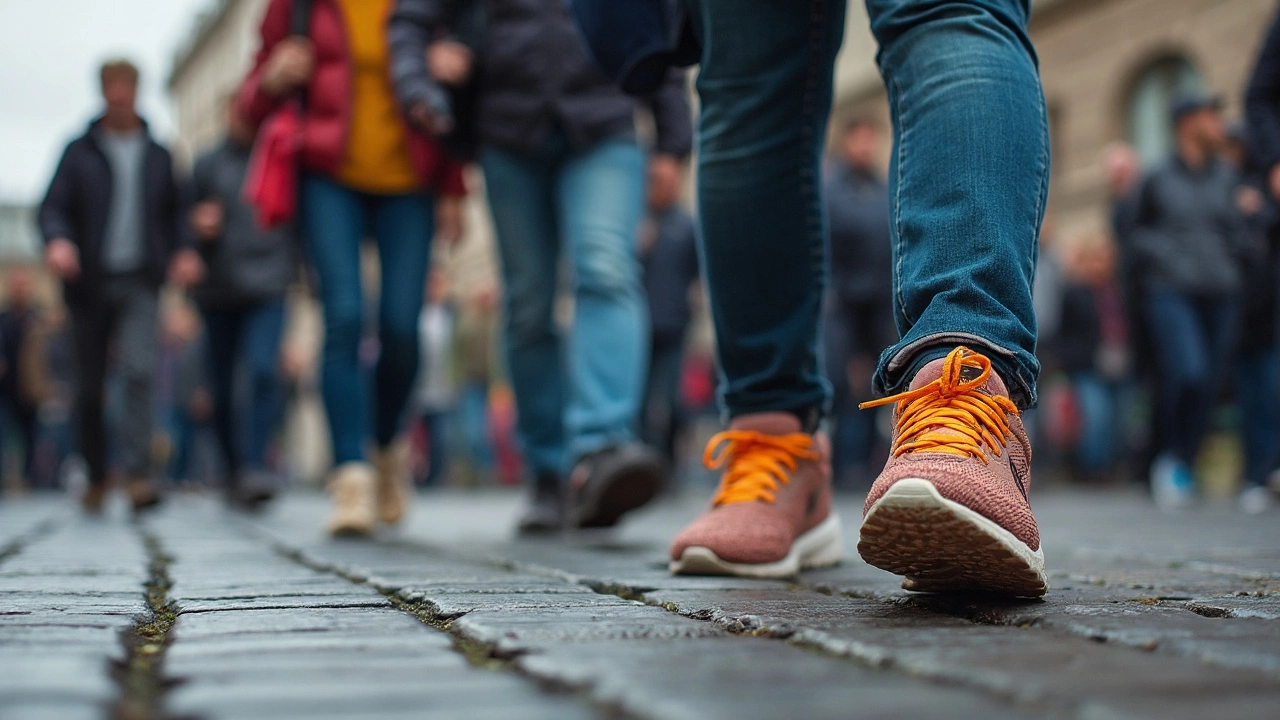Walking in Running Shoes: What You Need to Know
When you walking in running shoes, using footwear designed for high-impact running to support low-impact walking. Also known as running shoes for walking, it’s a common habit—especially among people who already own a pair of trainers and assume they’re good for everything. But not all shoes are built the same, and forcing a running shoe to do a walker’s job can lead to discomfort, poor posture, or even injury over time.
The difference between running shoes, footwear engineered to absorb shock during high-speed foot strikes and forward propulsion and walking shoes, footwear designed for heel-to-toe roll, stability, and consistent ground contact comes down to how your foot moves. Runners land on midfoot or forefoot with force, so running shoes have thick, cushioned heels and flexible forefoot zones. Walkers hit the ground with their heel first, then roll smoothly forward—so walking shoes need firmer midsoles, wider bases, and less bounce. A running shoe’s extra cushioning might feel nice at first, but it can actually make your walk less efficient by encouraging overstriding or unstable landings.
Many people switch to walking after injury, age, or lifestyle changes—and they reach for the same shoes they used for running. That’s understandable. But if you’re walking 30 minutes a day, five days a week, you’re putting in over 100 miles a year. That’s a lot of miles for shoes not built for the job. You’ll notice it in your arches, your knees, or even your lower back. Some brands like New Balance and Brooks make hybrid models that balance cushioning and support for both activities, but they’re the exception, not the rule.
What you really need is a shoe that matches your movement—not your past workout. If you’re walking for health, not speed, you don’t need the same tech as a marathoner. You need grip that doesn’t slip on wet pavement, a sole that doesn’t collapse under your heel, and enough structure to keep your foot aligned. The best walking shoes feel like they’re holding your foot steady, not trying to launch you forward. And yes, you can find them without spending $200.
Below, you’ll find real advice from people who’ve tried everything—from wearing their old running shoes on long walks to switching to dedicated walking footwear. You’ll see what works, what doesn’t, and why some people swear by their worn-out trainers while others swear off them entirely. No fluff. No marketing hype. Just what matters when your feet are your main tool for staying active.
Can You Walk All Day in Running Shoes? Real-World Comfort and Surprising Facts
Ever wondered if your running shoes can handle a full day on your feet? This article digs into comfort, support, and wear-and-tear if you use running shoes for all-day walking. Discover what happens to your feet, how shoes hold up, and which features matter. Get expert-backed tips and learn about the subtle differences between running and walking shoes. Find out if running shoes fit your lifestyle beyond the treadmill.





